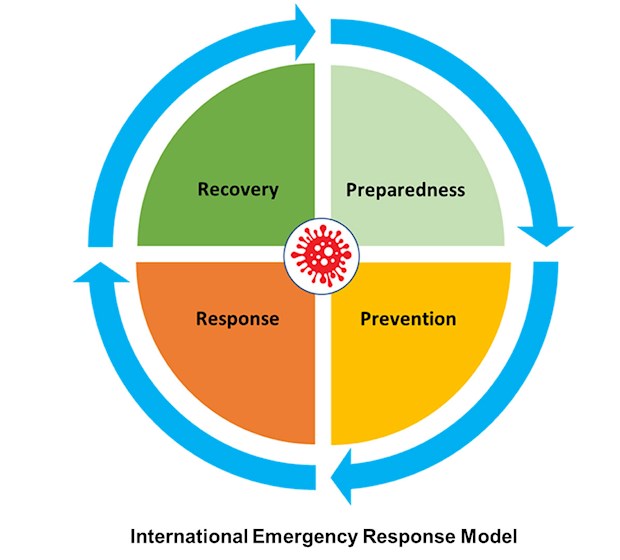Effective Pandemic Preparedness: Strategies for a Resilient Future
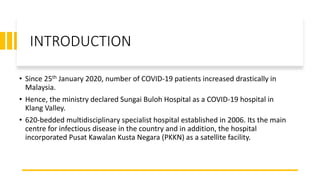
Anticipating the Unforeseen: The Essence of Pandemic Preparedness
In a world marked by uncertainty, the importance of pandemic preparedness cannot be overstated. This article delves into the strategies essential for creating a resilient foundation to navigate unforeseen challenges.
Learning from Past Experiences
The first pillar of effective pandemic preparedness is learning from historical outbreaks. Analyzing past pandemics equips us with valuable insights into the patterns of disease spread, enabling us to refine response strategies and allocate resources more effectively.
Strengthening Global Surveillance and Early Warning Systems
A robust surveillance system is the backbone of pandemic preparedness. Timely detection and reporting of potential threats allow for swift response measures. Collaborative global efforts in monitoring and sharing information can significantly enhance our ability to contain and manage outbreaks.
Building Healthcare Infrastructure Resilience
Preparing healthcare infrastructure for a surge in cases is critical. Adequate resources, well-trained healthcare professionals, and adaptable facilities ensure a resilient response. Investing in healthcare infrastructure is an investment in the well-being of communities during pandemics.
Implementing Effective Communication Strategies
Clear and transparent communication is key during a pandemic. Informing the public about risks, preventive measures, and the status of the situation fosters trust. Governments and health organizations must ensure that information is accessible, accurate, and consistently disseminated.
The Role of Technology in Pandemic Response
Technological advancements play a pivotal role in pandemic preparedness. From rapid diagnostic tools to data analytics for tracking and predicting outbreaks, technology empowers us to respond more efficiently. Integration of tech solutions enhances our overall preparedness and response capabilities.
Prioritizing Research and Development
Investing in research and development accelerates the creation of vaccines, treatments, and diagnostic tools. Pandemic preparedness requires continuous efforts to stay ahead of emerging threats. Collaboration between the scientific community, governments, and pharmaceutical industries is crucial for success.
Establishing International Collaboration
Pandemics transcend borders, necessitating a united global front. International collaboration in resource-sharing, knowledge exchange, and coordinated response efforts is imperative. A collective approach strengthens our ability to manage and mitigate the impact of pandemics.
Community Engagement and Empowerment
Empowering communities with knowledge and resources is a fundamental aspect of pandemic preparedness. Engaging with local communities, educating them on preventive measures, and fostering a sense of collective responsibility contribute to a more resilient society.
The Road Ahead: Pandemic Preparedness Strategies in Action
As we navigate the complexities of our global landscape, it’s crucial to actively implement and adapt pandemic preparedness strategies. Stay informed about the latest developments in pandemic preparedness strategies at Pandemic Preparedness Strategies, and let us collectively build a resilient future.
Strategic Readiness: Pandemic Preparedness Training
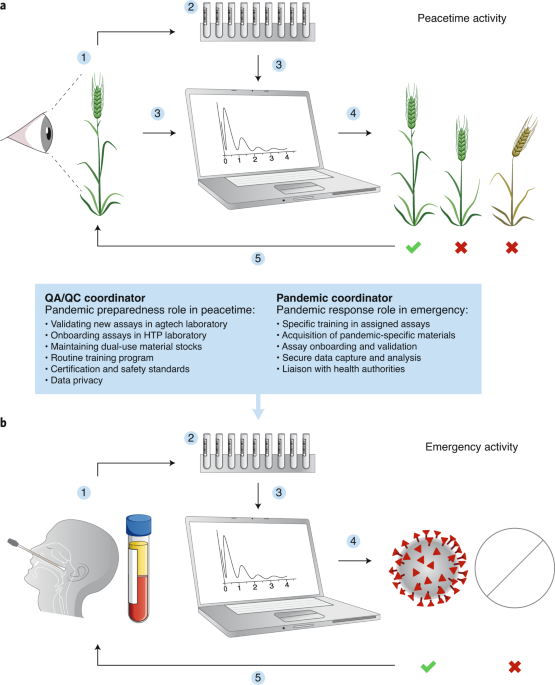
Strategic Readiness: Pandemic Preparedness Training
In the face of global health crises, pandemic preparedness training has emerged as a critical component in ensuring the resilience and adaptability of individuals, organizations, and communities. This comprehensive training equips participants with the knowledge and skills necessary to navigate and respond effectively to pandemics.
Understanding the Importance of Preparedness:
The first step in pandemic preparedness training is understanding the importance of being prepared. This section delves into the reasons why preparedness is crucial, emphasizing the unpredictable nature of pandemics and the potential impact on individuals, businesses, and public health systems.
Pandemic Preparedness Training: A Comprehensive Guide
For a comprehensive guide on pandemic preparedness training, visit Pandemic Preparedness Training for valuable insights and resources.
Risk Assessment and Planning:
Pandemic preparedness begins with a thorough risk assessment and planning process. This includes identifying potential risks, assessing vulnerabilities, and developing comprehensive plans to mitigate the impact of a pandemic. Participants learn how to create tailored strategies based on their specific context, ensuring a proactive rather than reactive approach.
Health and Safety Protocols:
A crucial aspect of pandemic preparedness training is the understanding and implementation of health and safety protocols. This involves educating participants on proper hygiene practices, the effective use of personal protective equipment (PPE), and adherence to public health guidelines. These protocols not only protect individuals but also contribute to broader community well-being.
Communication Strategies in Crisis:
Effective communication is paramount during a pandemic. This section focuses on training participants in communication strategies tailored for crisis situations. From internal communication within organizations to transparent and timely information dissemination to the public, these strategies help maintain trust and facilitate a coordinated response.
Role-Specific Training for Professionals:
Different professions require specific skills and knowledge in pandemic situations. This part of the training tailors information for various professionals, such as healthcare workers, emergency responders, and business leaders. Role-specific training ensures that each sector is well-prepared to fulfill its unique responsibilities during a pandemic.
Utilizing Technology for Preparedness:
In the digital age, technology plays a crucial role in pandemic preparedness. This segment explores the use of technology for early detection, monitoring, and communication. From surveillance systems to data analytics, participants learn how technology can enhance the effectiveness of pandemic response efforts.
Community Engagement and Support:
Community engagement is a cornerstone of effective pandemic preparedness. Training emphasizes the importance of community involvement, collaboration, and support networks. Participants learn how to engage with diverse communities, address concerns, and foster a sense of collective responsibility for health and well-being.
Simulations and Drills:
Hands-on experience is invaluable in pandemic preparedness training. Simulations and drills allow participants to apply their knowledge in realistic scenarios, honing their decision-making skills and teamwork. These exercises provide a practical understanding of the challenges posed by pandemics and enhance overall readiness.
Continuous Learning and Adaptation:
Pandemic preparedness is an ongoing process that requires continuous learning and adaptation. This section of the training focuses on creating a culture of preparedness, encouraging participants to stay informed, update plans regularly, and remain agile in the face of evolving health challenges.
Conclusion:
Pandemic preparedness training is not just a precautionary measure; it is a strategic investment in the resilience and well-being of individuals and communities. By understanding the importance of preparedness, conducting risk assessments, implementing health and safety protocols, fostering effective communication, providing role-specific training, leveraging technology, engaging with communities, and conducting simulations, participants are better equipped to navigate the complexities of pandemics. This comprehensive training sets the stage for a proactive and coordinated response, ensuring that individuals and organizations are strategically ready to face the challenges of global health crises.
Navigating Crisis: Pandemic Management Strategies
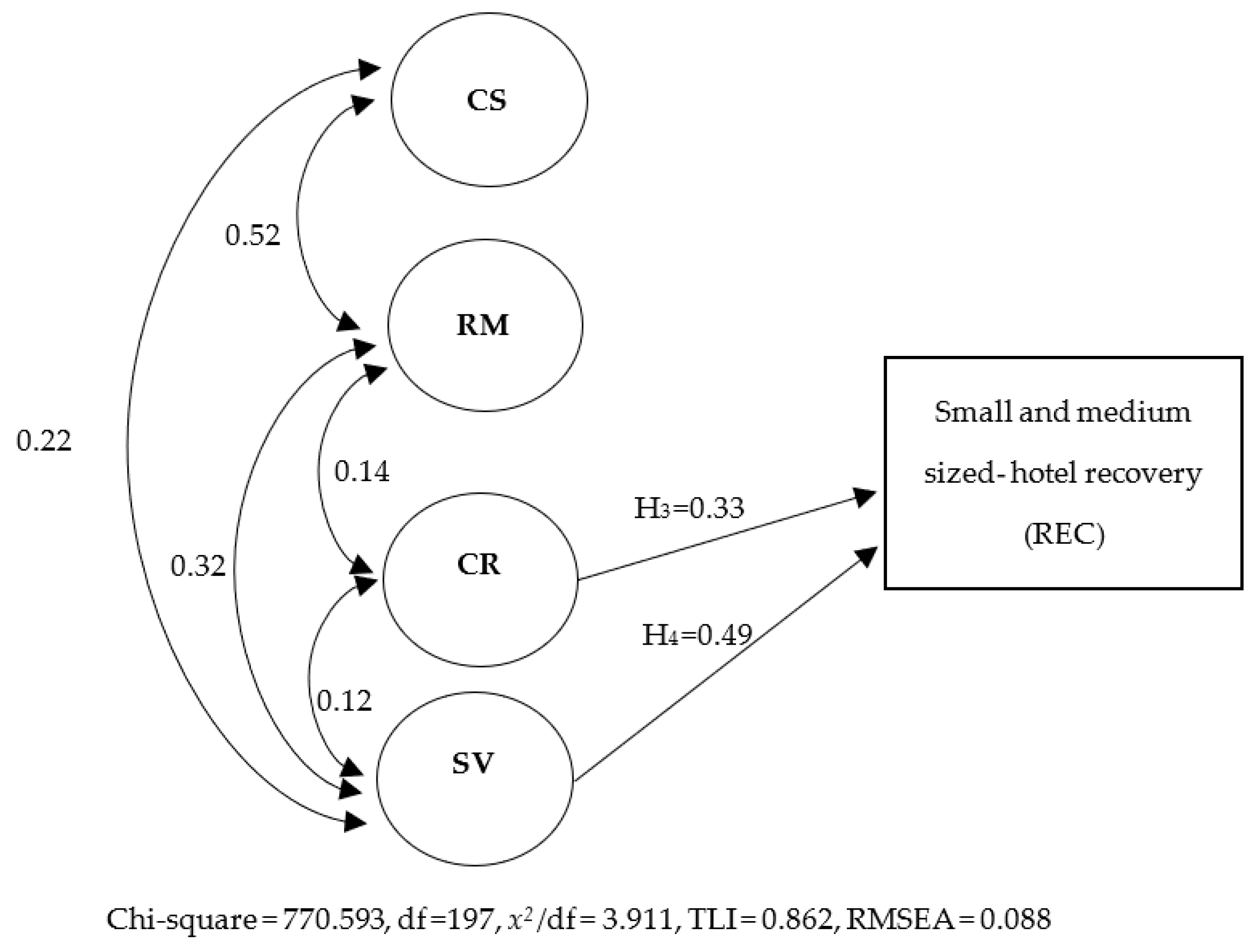
Strategies for Navigating Crisis: Pandemic Management Unveiled
The global pandemic has tested the resilience of individuals, communities, and organizations. In this article, we delve into effective crisis management strategies amidst the ongoing pandemic, exploring key principles to guide us through these challenging times.
Understanding the Nature of the Crisis: A Foundation for Action
Effective crisis management begins with a clear understanding of the nature of the crisis. In the case of a pandemic, comprehending the virus’s characteristics, transmission methods, and potential impacts is crucial. This knowledge forms the foundation for informed decision-making and proactive responses.
Establishing a Crisis Management Team: Coordinated Leadership
Central to navigating a crisis is the formation of a dedicated crisis management team. This team, comprised of individuals with diverse expertise, ensures a comprehensive approach to addressing challenges. Coordinated leadership, quick decision-making, and clear communication are hallmarks of an effective crisis management team.
Communication is Key: Transparent and Timely Information
Transparent and timely communication is paramount during a crisis. Keeping stakeholders informed fosters trust and helps manage anxiety. Regular updates on the situation, preventive measures, and response efforts are essential. Utilizing various communication channels ensures information reaches a broad audience.
Implementing Preventive Measures: Proactive Risk Mitigation
Proactive measures play a vital role in crisis management. Implementing preventive measures, such as social distancing, hygiene protocols, and travel restrictions during a pandemic, helps mitigate the risk of spreading the virus. A comprehensive strategy that prioritizes public health is fundamental to crisis containment.
Adapting Business Continuity Plans: Ensuring Operational Resilience
Organizations must adapt their business continuity plans to navigate the challenges posed by a pandemic. This involves identifying critical functions, establishing remote work capabilities, and securing supply chains. Flexibility and adaptability are key elements in ensuring operational resilience during times of crisis.
Crisis Response and Resource Allocation: Agility in Action
The ability to respond swiftly and allocate resources effectively is a defining aspect of crisis management. This agility requires a dynamic response plan that can be adjusted based on evolving circumstances. Allocating resources strategically ensures that essential needs are met and crisis impacts are minimized.
Fostering a Resilient Organizational Culture: Employee Support
Maintaining a resilient organizational culture is essential during a crisis. Prioritizing employee well-being, offering support services, and fostering a sense of community contribute to a resilient workforce. Investing in employee mental health programs helps mitigate the emotional toll of the crisis.
Learning from the Crisis: Post-Crisis Analysis and Adaptation
Post-crisis analysis is a critical component of effective crisis management. Conducting a thorough review of actions taken, identifying areas for improvement, and incorporating lessons learned into future crisis plans enhances an organization’s overall resilience. Continuous adaptation is key in an ever-changing landscape.
Global Collaboration for Pandemic Management: Uniting Against a Common Foe
The interconnected nature of a pandemic necessitates global collaboration. Sharing information, resources, and best practices on an international scale enhances collective efforts. Collaborative initiatives, such as vaccine distribution programs and research partnerships, showcase the power of united action against a common foe.
In the midst of navigating these crisis management strategies, individuals and organizations can find additional insights and support through resources such as Crisis Management Pandemic. This centralized hub offers guidance on crisis response, risk mitigation, and fostering resilience in the face of ongoing challenges.
Strategic Responses: Navigating Pandemic Challenges
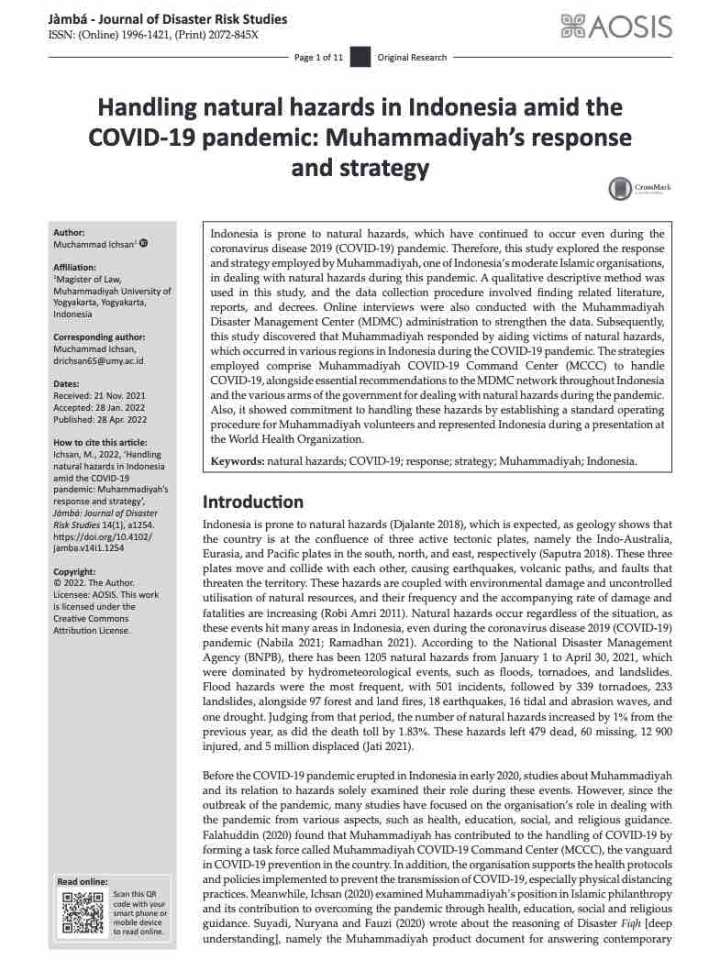
Crafting Effective Responses: Navigating Pandemic Challenges
The unprecedented challenges posed by a global pandemic demand strategic and adaptive responses. In navigating these complex scenarios, effective pandemic response strategies emerge as crucial tools for mitigating the impact, safeguarding communities, and fostering resilience.
Understanding the Dynamic Nature of Pandemics
The foundation of effective pandemic response lies in a comprehensive understanding of the dynamic nature of these global health crises. Recognizing that pandemics evolve, presenting different challenges at various stages, allows for the formulation of strategies that are agile, adaptive, and rooted in real-time data and insights.
Collaborative Governance and Interagency Coordination
A successful pandemic response requires collaborative governance and seamless interagency coordination. Governments, healthcare systems, and relevant agencies must work together cohesively. Establishing clear communication channels, sharing resources, and coordinating efforts ensure a unified response that is vital in managing the complexities of a pandemic.
Implementing Early Detection and Surveillance Systems
Early detection is paramount in controlling the spread of a pandemic. Implementing robust surveillance systems, both at local and global levels, facilitates early identification of outbreaks. Monitoring trends, analyzing data, and swiftly responding to emerging threats enable authorities to contain and manage the impact of the pandemic effectively.
Strategic Testing and Contact Tracing Initiatives
Strategic testing and contact tracing initiatives form the bedrock of a targeted response. Widespread and accessible testing, coupled with efficient contact tracing, allows for the identification and isolation of cases promptly. This strategic approach helps break the chains of transmission and prevents the exponential spread of the virus.
Healthcare System Preparedness and Capacity Building
Ensuring the preparedness and capacity of healthcare systems is a critical aspect of pandemic response. This involves strengthening healthcare infrastructure, securing adequate medical supplies, and enhancing the capacity of healthcare professionals. A robust healthcare system is essential for managing the influx of patients and providing quality care.
Communication and Public Awareness Campaigns
Transparent and timely communication is indispensable in a pandemic response. Implementing effective communication strategies and public awareness campaigns disseminate accurate information, dispel myths, and foster a sense of collective responsibility. Informed communities are more likely to adhere to preventive measures, contributing to the overall success of the response.
Balancing Social and Economic Impacts
Pandemic response strategies must strike a delicate balance between addressing the health crisis and mitigating social and economic impacts. Implementing measures to support individuals and businesses affected by the pandemic, such as financial aid packages, unemployment support, and targeted economic stimulus, contributes to a more holistic response.
Prioritizing Vulnerable Populations and Equity
An equitable pandemic response prioritizes the needs of vulnerable populations. This includes the elderly, individuals with underlying health conditions, and marginalized communities. Tailoring strategies to address the specific challenges faced by these groups ensures that the response is inclusive and leaves no one behind.
International Cooperation and Information Sharing
Pandemics transcend borders, underscoring the importance of international cooperation. Sharing information, expertise, and resources on a global scale enhances the collective response. Collaborative efforts among nations foster a sense of solidarity and enable a more effective and coordinated approach to managing and overcoming the pandemic.
To delve deeper into effective pandemic response strategies, visit Pandemic Response Strategies. As the world grapples with the challenges posed by global health crises, implementing thoughtful and strategic responses is imperative. By understanding the evolving nature of pandemics, fostering collaboration, and prioritizing the well-being of communities, nations can navigate these challenges with resilience and effectiveness.
Swift Emergency Response: Navigating the Pandemic Challenges

Swift Emergency Response: Navigating the Pandemic Challenges
The ongoing pandemic has necessitated a swift and effective emergency response. In this article, we explore the critical components and strategies for navigating the challenges posed by the pandemic through an agile and comprehensive emergency response.
Understanding the Urgency: Importance of Swift Response
The urgency of a swift emergency response during a pandemic cannot be overstated. The dynamic nature of the crisis demands immediate action to mitigate the impact on public health, the economy, and overall societal well-being. Understanding the importance of timely responses sets the stage for effective emergency management.
Collaborative Approach: Unifying Efforts for Maximum Impact
A collaborative approach is paramount in a pandemic emergency response. Governments, healthcare institutions, businesses, and communities must unite their efforts to address the multifaceted challenges. Coordination and cooperation on local, national, and international levels enhance the overall impact and efficiency of emergency response initiatives.
Healthcare System Readiness: Strengthening Capacity and Resources
The readiness of the healthcare system is a cornerstone of a swift emergency response. Strengthening the capacity of hospitals, clinics, and healthcare professionals is crucial. Adequate resources, including medical supplies, equipment, and personnel, ensure that the healthcare system can handle the surge in cases and provide essential care to those affected by the pandemic.
Communication Strategies: Transparent and Timely Information
Effective communication is a linchpin in emergency response efforts. Transparent and timely information dissemination helps manage public perception, instill confidence, and guide individuals on appropriate actions. Clear communication about health guidelines, safety measures, and the evolving situation fosters a sense of trust and cooperation within the community.
Logistics and Distribution: Efficient Resource Allocation
Logistics and distribution play a vital role in ensuring that resources reach where they are needed most. This includes the timely distribution of medical supplies, testing kits, and vaccines. Implementing efficient logistics strategies enables emergency responders to address critical needs promptly and prevent bottlenecks in the supply chain.
Adaptive Policy Framework: Responding to Evolving Circumstances
An agile and adaptive policy framework is essential for navigating the uncertainties of a pandemic. Policies must be flexible, responsive to changing circumstances, and based on the latest scientific evidence. The ability to adjust strategies based on real-time data ensures that emergency response measures align with the evolving nature of the crisis.
Economic Support: Mitigating Financial Impact
Swift emergency response extends to mitigating the financial impact of the pandemic. Providing economic support to individuals, businesses, and affected sectors helps alleviate the strain caused by disruptions. Stimulus packages, financial assistance programs, and support for struggling industries contribute to economic resilience during challenging times.
Education and Awareness: Empowering the Public
Educating the public and raising awareness are integral components of a swift emergency response. Clear communication about preventive measures, testing locations, vaccination campaigns, and available support services empowers individuals to make informed decisions. Public understanding and compliance with guidelines are crucial for the success of emergency response efforts.
Continuous Monitoring and Evaluation: Enhancing Effectiveness
A robust emergency response requires continuous monitoring and evaluation. Regular assessments of the situation, response measures, and outcomes help identify areas for improvement. This iterative process enhances the effectiveness of emergency response strategies and ensures that resources are allocated optimally.
Accessing Emergency Response Pandemic: A Resource Hub
For additional insights and resources on swift emergency response strategies during the pandemic, consider exploring Emergency Response Pandemic. This centralized hub provides valuable information, best practices, and support for individuals and communities navigating the challenges of emergency response in the ongoing pandemic.

